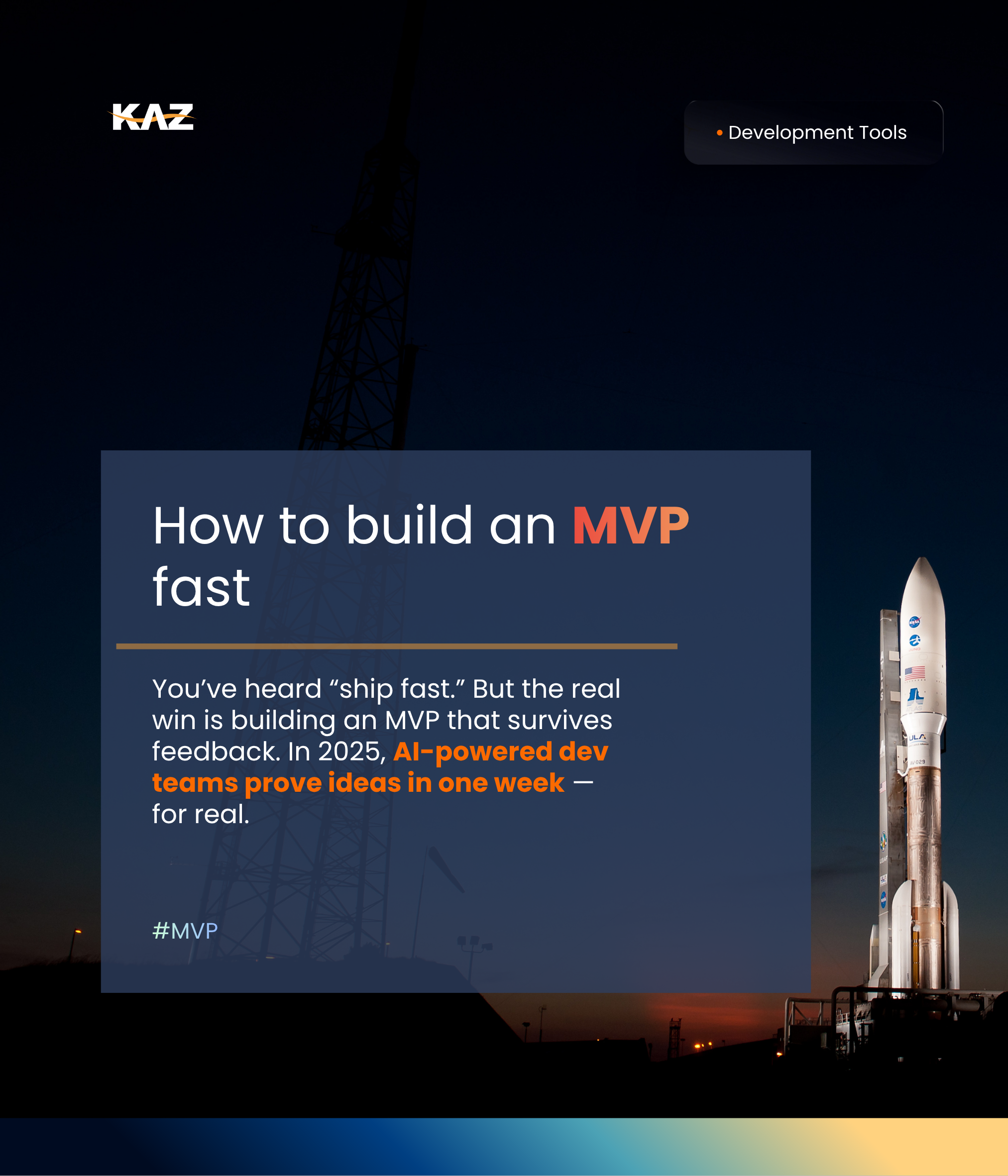The one-week MVP: how developers actually ship fast
/Building MVP fast isn’t the hard part anymore. Building something worth keeping is.
Building an MVP in seven days isn’t a hackathon stunt. It’s a focused, disciplined sprint that balances speed, validation, and code that lasts beyond demo day.
Everyone talks about building an MVP in a week. Few actually pull it off. The truth is that a one-week MVP isn’t about working faster — it’s about cutting noise, reducing scope, and proving the smallest version of a real product that someone can use. Startups chase this because timing matters: the faster a team validates an idea, the sooner it learns whether to double down or walk away. In 2025, AI copilots, low-code tools, and serverless platforms make the seven-day MVP realistic — but only if developers treat it like engineering, not improvisation.
Why speed without focus kills MVPs
Most teams that fail to ship quickly aren’t short on talent; they’re trapped by indecision. They chase “perfect tech stacks” or spend days debating frameworks. In reality, the best MVPs ignore perfection. They use what’s already proven — React or Vue for the front end, Node or Python for the back end, Supabase or Firebase for data — anything that cuts decisions and lets ideas breathe. The point isn’t the stack; it’s the story the product tells in a week.
Studies by CB Insights show that 42% of startups fail because there’s “no market need.” That’s the core reason MVPs exist — to find out if anyone cares before wasting months of code. Building too much too soon hides that answer behind vanity features. A good MVP instead looks like this: one user journey, one real output, one feedback channel. Everything else waits.
Modern dev tools make this faster than ever. GitHub Copilot and Amazon Q help teams scaffold APIs and models in minutes. Tools like Figma, Framer, and Vercel remove friction between design, prototype, and deploy. A small team can now deliver a live, testable product in days — not because they code faster, but because they’ve learned what not to code.
Shipping fast doesn’t mean sloppy. It means being deliberate. The most effective MVPs are the ones that feel small but stable — something users can actually click, break, and comment on. That feedback loop is worth more than any architecture diagram.
Building MVPs that survive after week one
A real MVP must do two things well: demonstrate value and stay alive long enough to learn from users. Many teams forget the second part. They build prototypes that crumble once traffic hits or a feature breaks. This happens because their focus ends at the demo instead of the system.
The developers who consistently ship solid one-week MVPs design for survival. They build thin, testable layers: clean routes, simple data handling, no fragile dependencies. They deploy early — sometimes by day 3 — to start observing behavior. Error tracking through Sentry or Logtail, even at small scale, helps catch silent crashes before testers do. What separates mature devs from sprint amateurs is how they instrument their code. They log, monitor, and rollback confidently.
In 2025, low-code and no-code ecosystems make this even smoother. Tools like Retool, Bubble, and WeWeb let teams link APIs, design dashboards, and validate business flows without building every component from scratch. For MVPs, that’s not cheating — it’s smart allocation. The goal isn’t to impress other developers; it’s to get user data that proves whether the idea deserves a second sprint.
When done right, a one-week MVP becomes the first iteration of the actual product, not a throwaway demo. Engineers can refactor, extend, or replace pieces gradually rather than rewriting from zero. The “viable” in Minimum Viable Product matters as much as the “minimum.” If it doesn’t survive contact with users, it’s just a prototype — and prototypes don’t raise rounds or earn trust.
The new shape of MVP development in 2025
Building fast has changed. The old MVP model — late nights, pizza, and a single deploy on Sunday — doesn’t match how modern teams operate. Today’s MVPs rely on automation, AI support, and continuous feedback. GitHub’s 2025 Octoverse report notes that repositories using AI coding assistants commit 55% faster from prototype to production than those without. That’s not hype; it’s leverage. The teams that win are those that combine machine-generated scaffolding with human judgment about what really matters.
The process now looks less like hacking and more like orchestration. Designers start with interactive Figma boards while developers wire up endpoints. Product managers feed prompts to AI to generate user stories or acceptance criteria. Deployment happens on day 1, not day 7, because everyone knows iteration beats perfection.
Even funding culture has shifted. Investors and accelerators increasingly ask to see a live MVP before the pitch deck. The bar for validation has moved from “we have a plan” to “we have users.” For developers, that means learning to think beyond commit history — to design quick experiments that can fail gracefully.
But the real evolution is philosophical. A week is no longer the constraint; it’s the discipline. Shipping a working MVP in seven days forces clarity, forces trade-offs, and forces teams to talk to users instead of each other. In the noise of frameworks and AI tools, that focus is what keeps engineering human.
Building fast isn’t the hard part anymore. Building something worth keeping is.





